Thank you for visiting! By the way… any links on this page that lead to products on Amazon and other stores/partners are affiliate links Aquarium Store Depot earns a commission if you make a purchase.
Who doesn’t remember Finding Nemo, I’m sure we all do.
As an aquarist, I was always fascinated by the fact that there were a myriad of fish swimming around the sea so peacefully.
There are so many beautiful, colorful and diverse species of fish that appear throughout the movie, such as anglerfish, jellyfish, and pelicans. Each fish has a beautiful role and the fact that they all are real life fish species is commendable.
In this article, we’ll explore the 17 different types of fish from finding Nemo, the iconic Pixar film, that tickled our inner aquarists.
Let’s keep swimming!
Key Takeaways
- There are several fish featured in Finding Nemo including Clownfish, Hippo tang, Yellow tang, Royal Gramma, and the Moorish Idol
- All fish featured in Finding Nemo and Finding Dory are saltwater fish that require specialized care
- The easiest-to-care-for fish shown in the movie are the Clownfish and Royal Gramma
- The only freshwater fish show in the movie was a Goldfish by the name of Chuckles
Types Of Fish In Finding Nemo
1. Clownfish (Nemo)
- Scientific Name: Amphiprion ocellaris
- Difficulty Level: Easy beginner fish
- Temperament: Semi-aggressive
- Adult Size: Up to 4 inches
- Minimum Tank Size: 20 gallons
- Diet: Omnivores
- Origin: Indian Ocean, Red Sea and western Pacific Ocean.
- Water temperature: 75 and 80 degrees Fahrenheit
- Reef Safe: Yes
- Available As Tank Bred: Yes
The movie, Finding Nemo starts with three main characters of the clownfish, namely Marlin, Mother Coral, and Nemo, inhabiting the Great Barrier Reef.
Clownfish are also called as anemonefish because they form symbiotic relationships with sea anemones within coral reef environments, are tropical fish that reside and breathe in sea anemones— just like the finding Nemo fish; Marlin and Mother Coral.
They have a very striking appearance that becomes even more dazzling near sea anemones.
In reality, there are around 30 different fish species of clownfish of various size, color, and patterns. However, the most popular among them is the fish from Finding Nemo1; with orange and white stripes.
They are easy to look for and generally hardy, especially when provided with a balanced diet and ideal water conditions.
Discover the ultimate way to showcase your underwater masterpiece with custom, breathtaking personalized metal wall art. levate your marine paradise to a whole new level of artistry and let your underwater world shine like never before!
2. Blue Hippo Tang (Dory)
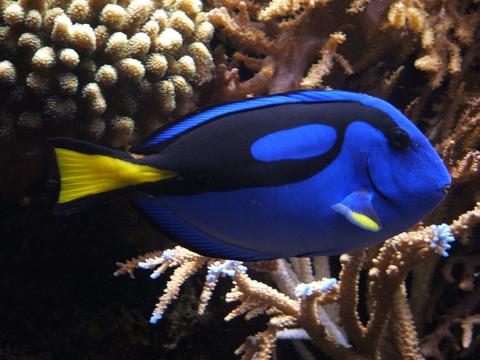
- Scientific Name: Paracanthurus hepatus
- Difficulty Level: Moderate
- Temperament: Semi-aggressive
- Adult Size: 12 inches
- Minimum Tank Size: 180 gallons
- Diet: Herbivore
- Origin: Fiji, Indonesia, Maldives
- Temperature: 72-78° F
- Reef Safe: Yes
- Available As Tank Bred: Yes
No one motivated us like Dory did with her heroic lesson; “Just keep swimming!”
Dory is a beautiful Blue Hippo Tang fish that is kind, friendly, and jolly. However, she suffers from short-term memory loss, a condition that adds humor and challenges to her journey through the vast and adventurous East Australian Current, alongside Nemo’s dad, Marlin and Crush the sea turtle.
Blue Hippo tang are also called as Royal Blue Tang, Regal Rang, blue hippo tang, and Palette Surgeonfish. These fish are found in the reeds of Indian and Pacific oceans. In reality, they are pretty much like Dory; with bright blue bodies with a yellow tail and black spots on the head.
The Blue tangs or the palette surgeon fish are medium and large in size, suitable for large aquarium. They are a popular aquarium fish. However, due to their sensitive nature, the quality of water and diet should be well cared for.
3. Spotted Eagle Ray (Mr. Ray) – Can’t be kept in aquariums
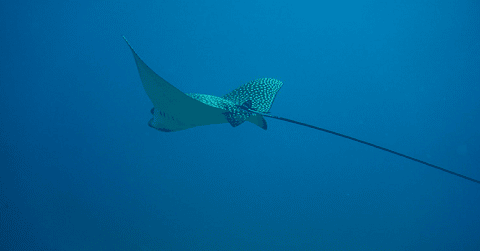
- Scientific Name: Aetobatus narinari
- Difficulty Level: N/A
- Temperament: Non-aggressive but defensive
- Adult Size: 16.4 feet (5 m)
- Minimum Tank Size: N/A
- Diet: carnivores
- Origin: Indo-Pacific region from the western Pacific Ocean, the Indian Ocean, and the western Atlantic Ocean
- Temperature: 75 to 81 degrees Fahrenheit
- Reef Safe: N/A
- Available As Tank Bred: N/A
We sure had lovely, supportive and encouraging teachers just like Mr. Ray that we loved throughout the animated movie Finding Nemo.
Spotted eagle ray includes other species of eagle rays and stingrays. They are mostly found in tropical and subtropical regions around Atlantic, Pacific, and Indian Oceans.
Just like Mr. Ray, the real life spotted eagle ray have long, slender bodies with wings, spanning up to 10 feet wide.
They are near threatened species as listed by the IUCN due to overfishing and habitat destruction.
4. Longnose Butterfly (Tad)
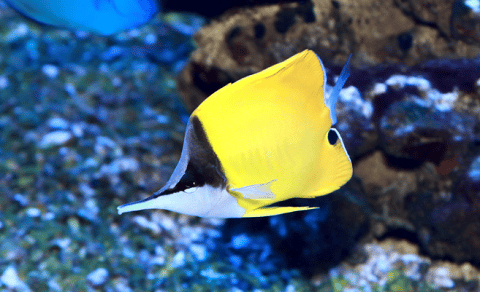
- Scientific Name: Forcipiger Flavissimus
- Difficulty Level: Moderate
- Temperament: Peaceful
- Adult Size: 9 inches
- Minimum Tank Size: 125 gallons
- Diet: Carnivore
- Origin: East Indian Ocean, West Indian Ocean, Australia, Japan, The Red Sea, Indonesia, East Pacific, Central/West Pacific
- Temperature: 70.0 to 81.0° F
- Reef Safe: No
- Available As Tank Bred: Rare
Tad is a friend who labels himself as obnoxious, but he’s rather a very enthusiastic, playful, and excited pal who loves exploring the reef with Nemo.
In real life, Tad is known as a long nose butterfly fish mostly found in the Western Atlantic Ocean and the Caribbean Sea. Just like Tad, Longnose Butterfly fish has long, thin snout with yellowish orange color adorned with black stripes. The Longnose butterfly fish are generally small in size and very hardy fish in the aquarium hobby.
5. Yellow Tang (Bubbles)

- Scientific Name: Zebrasoma flavescens
- Difficulty Level: (Put N/A for fish that can’t be kept in aquariums)
- Temperament: Semi-aggressive
- Adult Size: 8 inches
- Minimum Tank Size: 100 gallons
- Diet: Omnivores
- Origin: Northwest and Central Pacific ocean from southwest Japan to Marianna Islands, Marshall Islands, Marcus Island, Wake Island and Hawai’i.
- Temperature: 75–82 °F
- Reef Safe: Yes
- Available As Tank Bred: No
Bubbles is a very bubbly, fun-loving friend of Nemo and Dory. Bubbles is a yellow tang fish who is very cheerful and enjoys blowing bubbles . Hence, the name.
In real aquatic life, you can find many Bubbles by the name of Yellow tang. These tang fish are found in the Indo-Pacific region, growing around 8 inches in length.
Yellow tang fish are popular fish in the saltwater aquarium hobby because of their beautiful yellow color and hardiness.
In their native habitat, they love exploring the reefs and other shallow spots.
6. Striped Damselfish (Deb)
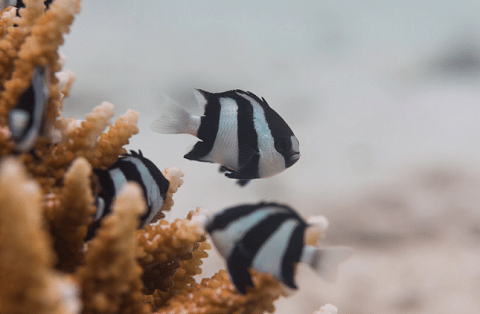
- Scientific Name: Dascyllus aruanus
- Difficulty Level: Easy
- Temperament: Semi-aggressive fish
- Adult Size: 3 to 4 inches
- Minimum Tank Size: 30 gallons
- Diet: Omnivore
- Origin: Western Pacific Ocean
- Temperature: 75-82° F
- Reef Safe: Yes
- Available As Tank Bred: Yes
Deb is a delusional friend who talks to her own reflection. Deb, despite her delusional behavior, is a supportive friend who helps Nemo on his journey, alongside characters like Peach, the patient sea star, and other tank inhabitants in the dentist’s office.
You can find an adorable pet like Deb by the name of Striped Damselfish. Since they are popular saltwater aquarium fish species, it’s easy to care for them.
7. Moorish Idol (Gill) – For Experts-only
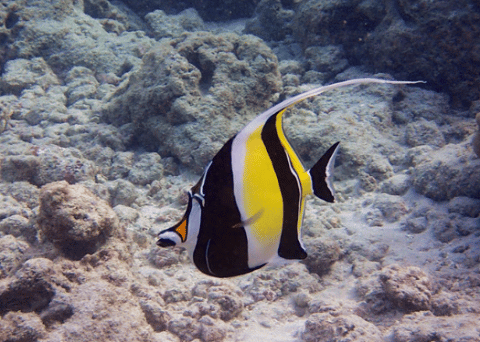
- Scientific Name: Zanclus cornutus
- Difficulty Level: Expert; not recommended as an aquarium fish
- Temperament: Peaceful
- Adult Size: 7 inches
- Minimum Tank Size: 125 gallons and over
- Diet: Omnivore
- Origin: Red Sea, the Indo-Pacific, and the eastern Pacific Oceans
- Temperature: 75 to 82 F
- Reef Safe: No
- Available As Tank Bred: Rare
Gill is a very intimidating and serious fish from Finding Nemo. He is also the leader of the tank gang in the dentist’s aquarium. The best trait of Gill is he is committed to help Nemo escape the aquarium. He also guides Nemo in many ways and eventually becomes his mentor.
Gill is a Moorish Idol fish that are easily found in the Indian and Pacific Ocean. They can be kept in saltwater aquarium hobby because they are small fish and hardy.
8. Royal Gramma (Gurgle)
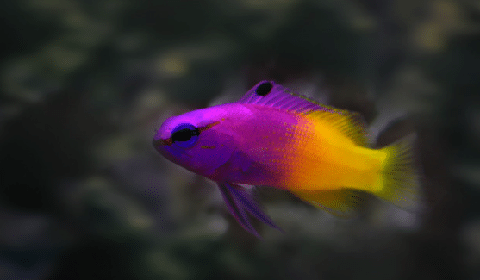
- Scientific Name: Gramma loreto
- Difficulty Level: Easy
- Temperament: Mellow and peaceful fish
- Adult Size: 3.1 inches
- Minimum Tank Size: 30 gallons
- Diet: Planktivores
- Origin: Native to reef environments of the tropical western Atlantic Ocean
- Temperature: 72 and 78 °F
- Reef Safe: Yes
- Available As Tank Bred: Yes
Gurgle is a brave fish in the dentist’s aquarium who has the audacity to tell Gills that his escape plans are nutty. Gurgle in Finding Nemo is shown asa pessimistic fish who is reluctant to be friends with reef fish, Nemo.
Gurgle is a Royal Gramma fish native to Western Atlantic Ocean and Caribbean Sea. Royal Gramma is an ombre colored dark purple to deep voilet fish with a golden yellow tail.
The royal gramma basslet are popular saltwater aquarium fish species as they add a brilliant pop of color to any home aquarium because of their beautiful bizarre colors.
9. PufferFish (Bloat)
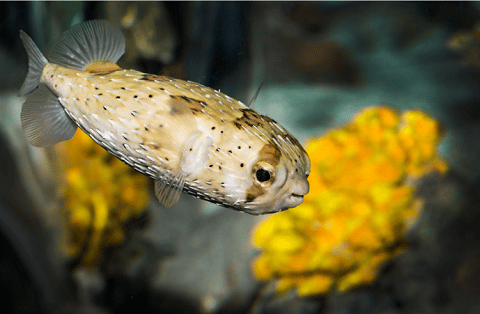
- Scientific Name: Tetraodontidae
- Difficulty Level: Difficult
- Temperament: Aggressive fish
- Adult Size: Can vary from two inches to up to several feet in length
- Minimum Tank Size: Typically 75+ gallons for most puffer fish
- Diet: Omnivores
- Origin: Middle Eocene Europe, with fossils found in Monte Bolca and the Caucasus Mountains
- Temperature: 74 and 78 degrees Fahrenheit
- Reef Safe: No
- Available As Tank Bred: Rare
Bloat is Gill’s, the Moorish Idol fish’s best friend. He an anxious and nervous puffer fish who inflates himself at any minor inconvenience.
For their delicate flavour and texture, Porcupine pufferfish, also known as Fugu in Japanese, are a species of fish that are highly esteemed in various cultures.
Some species of porcupine pufferfish are also extremely dangerous since their internal organs, skin, and certain tissues all contain tetrodotoxin, a neurotoxin. Humans are fatally affected by this toxin, which can result in severe symptoms including paralysis, respiratory problems, and even death.
10. Goldfish (Chuckles)
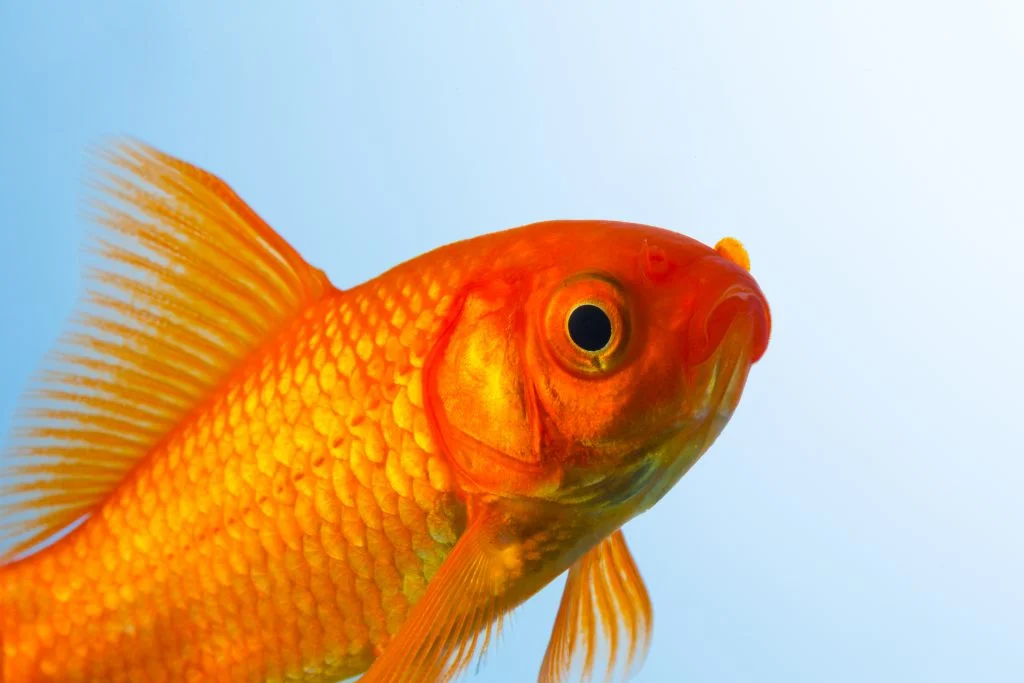
- Scientific Name: Carassius auratus
- Difficulty Level: Easy
- Temperament: Peaceful
- Adult Size: 10 inches
- Minimum Tank Size: at least 20 gallons for one fish (Freshwater fish)
- Diet: Omnivores
- Origin: Native to East Asia
- Temperature: 68° to 74° F
- Reef Safe: NA
- Available As Tank Bred: Yes
Chuckles is a goldfish in Finding Nemo who was supposed to be the pet of the dentist’s niece, Darla. However, it never made it to Darla’s home aquarium as it was already dead in the doctors’ clinic.
Goldfish is a freshwater fish that is popular as pet and for use in ornamental ponds. They belong to the Cyprinid family, which also contains carps and koi.
The brilliant, glittering scales of goldfish, which can be orange, red, yellow, or any combination of these hues, are what make them so distinctive.
They range from little, skinny fish to enormous, spherical fish, and they come in a wide range of sizes and forms.
11. Anglerfish
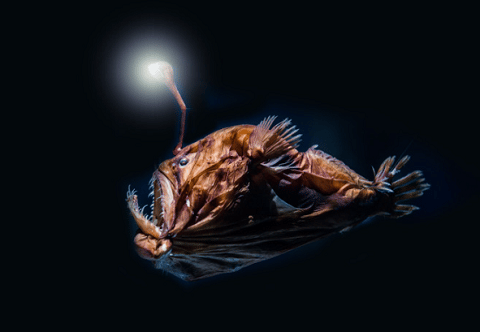
- Scientific Name: Lophiiformes
- Difficulty Level: Difficult— some species are cannot be kept in an aquarium
- Temperament: Aggressive
- Adult Size: Often less than a foot long
- Minimum Tank Size: 15 to 20 gallon tank
- Diet: Carnivore
- Origin: Atlantic and Antarctic ocean
- Temperature: Between 70 and 80 degrees
- Reef Safe: With caution
- Available As Tank Bred: Rare
The female Anglerfish shown in the movie Finding Nemo is fictional, but based on the real life characteristics of actual anglerfish.
Anglerfish are a particular species of fish distinguished by its unique hunting style. They have a lure, which is a long, rod-structure device, extending from their head, to draw in prey. In order to attract food to the lure in the deep, dark waters where anglerfish dwell, the tip of the lure is typically coated with a luminous or luminescent material.
12. Blue Whale
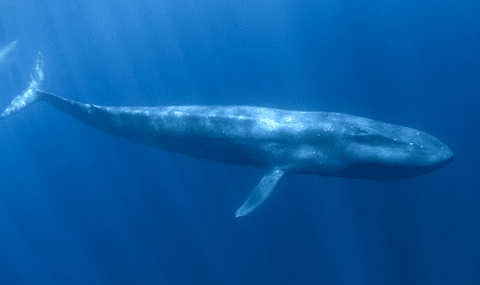
- Scientific Name: Balaenoptera musculus
- Difficulty Level: N/A
- Temperament: Loners
- Adult Size: Between 70 and 80 feet
- Minimum Tank Size: N/A
- Diet: Carnivore
- Origin: Found in all oceans except the Arctic
- Temperature: N/A
- Reef Safe: N/A
- Available As Tank Bred: N/A
Blue whale is a finding Nemo fish that plays a supportive role in the movie. He helps Marlin and Dory on their way to the Sydney harbor.
The largest animal on planet Earth, the blue whale grows around 100 feet in length and weigh around 200 tons. No ocean on planet Earth is free from the Blue Whale. However, they are commonly found in cold waters around polar regions.
The blue whale is a species of whale that is the largest animal on Earth. They can grow up to 100 feet in length and can weigh as much as 200 tons.
Blue whales are found in every ocean on the planet, but they are most commonly found in the colder waters of the polar regions.s. They are known for their unusual blue-gray appearance, which results from minute particles in their skin reflecting sunlight. The Blue whale looks celestial, darting in and out of the ocean.
13. FlounderFish (Mr. Johannsen)
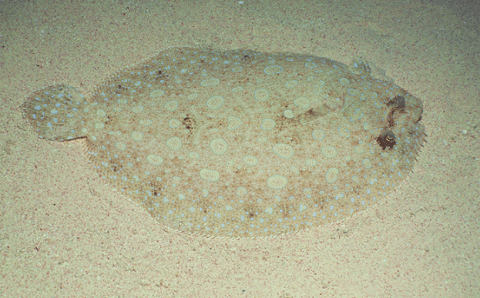
- Scientific Name: Paralichthys
- Difficulty Level: Moderate
- Temperament: Shy and peaceful
- Adult Size: 9 – 24 inches in length
- Minimum Tank Size: 125 gallons or more
- Diet: Carnivore
- Origin: Native to the Gulf of Mexico
- Temperature: 55-68º F
- Reef Safe: With caution
- Available As Tank Bred: No
Mr. Flounder is an old, grumpy fish from finding nemo that doesn’t like children. He also doesn’t like it when children plays in his sandy yard. Unfortunately, even after continuous struggle, he cannot catch the kids as he has both eyes on only one side of his face.
The shallow coastal areas of the Atlantic Ocean, the Mediterranean Sea, and the Black Sea are the native regions of Flounder, a species of flatfish. The bodies of Flounder is round, and they can blend in with their environment by changing the color of their skin. This allows them to hide on the ocean floor.
14. Barracuda (Ate Nemo’s Mother)

- Scientific Name: Sphyraena
- Difficulty Level: Moderate
- Temperament: Semi-aggressive
- Adult Size: 24 to 39 inches
- Minimum Tank Size: no less than 1000 gallons (not suited for aquariums)
- Diet: Carnivores
- Origin: West Indies and Florida
- Temperature:74 F and 82 F
- Reef Safe: No
- Available As Tank Bred: No
We all remember the main antagonist from Finding Nemo; the very aggressive fish that attacked Nemo’s mother. And made us very sad!
Barracudas are predatory fish native to tropical and subtropical seas all around the world. They eat tiny fish, shrimps, insects with their sharp teeth and streamlined bodies.
15. Great White Shark (Bruce)

- Scientific Name: Carcharodon Carcharias
- Difficulty Level: N/A
- Temperament: Aggressive
- Adult Size: 15 to 16 feet
- Minimum Tank Size: N/A
- Diet: Carnivore
- Origin: California, Peru, Chile, and surrounding coastal deposits
- Temperature: N/A
- Reef Safe: N/A
- Available As Tank Bred: N/A
Bruce in Finding Nemo appeared as a very intimidating, scary character, and rightfully so! Bruce is nothing but a great white shark.
However, Bruce is a fish-friendly shark, meaning he has made a promise to himself to NOT hurt any other fish. He is supportive and empathetic, however, sometimes, he can’t fight with nature and struggles badly with his predatory instincts.
The Great white sharks are endangered, and despite their terrifying reputation, their populations have been dropping recently as a result of overfishing and other human activity.
16. Mako Shark (Chum) – Bruce’s friend

- Scientific Name: Isurus oxyrinchus
- Difficulty Level: N/A
- Temperament: Fast and aggressive
- Adult Size: 13 feet
- Minimum Tank Size: N/A
- Diet: Carnivore
- Origin: Argentina and the Gulf of Mexico to Browns Bank off of Nova Scotia.
- Temperature: N/A
- Reef Safe: N/A
- Available N/A
Chum is an extremely lively Mako shark that is a member of the Fish-Friendly Sharks family. Chum also has a hook stuck in his nose because of some fishing history. Like Anchor, he loathes dolphins.
The Mako shark is popular for its speed and agility and is regarded as one of the ocean’s most powerful and athletic sharks. The mako shark is known for its razor-sharp teeth, which it uses to rip apart prey when hunting.
17. Hammerhead Sharks (Anchor)
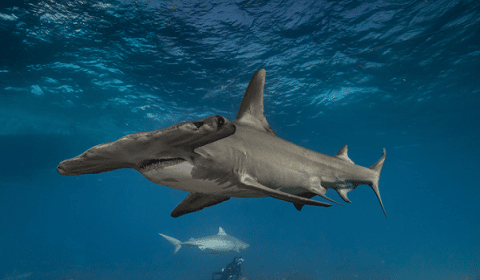
- Scientific Name: Sphyrnidae
- Difficulty Level: N/A
- Temperament: Aggressive
- Adult Size: 15 to 18 feet
- Minimum Tank Size: N/A
- Diet: Carnivore
- Origin: Found throughout the Atlantic and Indian Oceans and Pacific oceans and also in the Mediterranean sea
- Temperature: N/A
- Reef Safe: N/A
- Available As Tank Bred: N/A
Anchor is an unhappy hammerhead shark that belongs to the group “Fish Are Friends, Not Food.”
A hammerhead shark is a particular kind of shark distinguished by its distinctive Cephalofoil, or hammer-shaped head. The world’s temperate and tropical oceans are home to nine different species of hammerhead sharks.
FAQs
What Are The Fishes Called In the Movie?
Nemo, a clownfish, is the film Finding Nemo’s primary character. Marlin, his father, is also a clownfish. Other fish characters in the animated film include Gill, a Moorish idol who is the leader of the “Fish-Friendly” fish tank residents, Bruce, a great white shark who is trying to stop eating fish, and Dory, a blue tang fish with short-term memory loss.
What Are The Types Of Fishes In Finding Dory?
The protagonist is Dory, a blue tang fish. Other fish characters in the film include Bailey, a beluga whale with echolocation issues, Hank, a seven-armed octopus who helps Dory on her trip, and Nemo, a clownfish who is Dory’s buddy and Marlin’s son. Sea turtles, sea lions, and birds are just a few of the various marine and aquatic animals that appear in the film.
What Kind Of Fish Is Nemo And Dory?
Nemo is a clownfish and Dory is a blue tang. Both species are native to the coral reefs of the western Pacific Ocean and the Indian Ocean.
What’s The Black And White Fish From Nemo?
The black and white fish named Gill is a male Moorish Idol fish and the tritagonist of Finding Nemo, and a minor character in Finding Dory.
Final Thoughts
We have a video that summarizes everything we talked about in our blog post. Check out our YouTube Channel if you want more.
Now that you know that the fish in “Finding Nemo” are all based on real species that can be found in the ocean, including coral reefs and marine animals. The filmmakers worked with marine biologists to ensure that the characters in the movie were accurately depicted, and the movie has helped to raise awareness about the importance of protecting marine ecosystems and the sea creatures that live in them.
What was your favorite fish among all the fish in Finding Nemo? Let us know in the comments below!
- About the Author
- Latest Posts
I’m thrilled that you found Aquarium Store Depot! Here you’ll find information on fish, aquariums, and all things aquatics related. I’m a hobbyist (being doing this since I was 11) and here to help other hobbyists thrive with their aquariums! I adhere to a high quality Editorial Process and Review products with real life field usage and practical analysis.

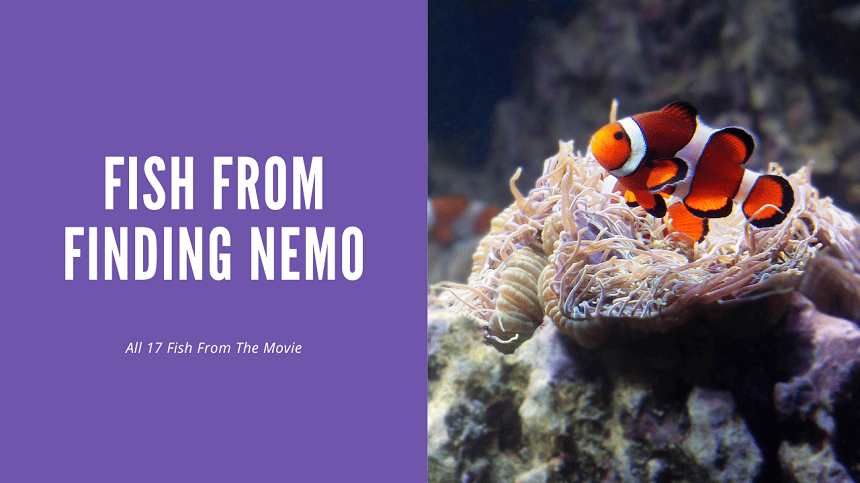
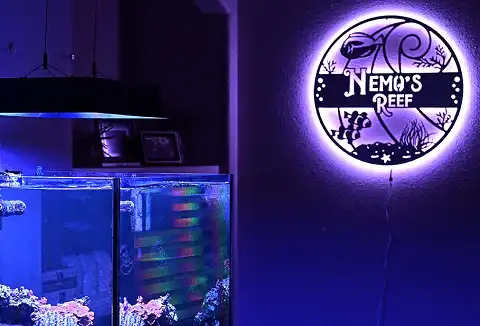




Thank you!!!!
I found this online while researching doing a production of Finding Nemo Jr. Nowhere in the script did it tell exactly what kind of fish were in the story. Now we can make our costumes and characters true to their natural being.
Awesome :). Glad I could help